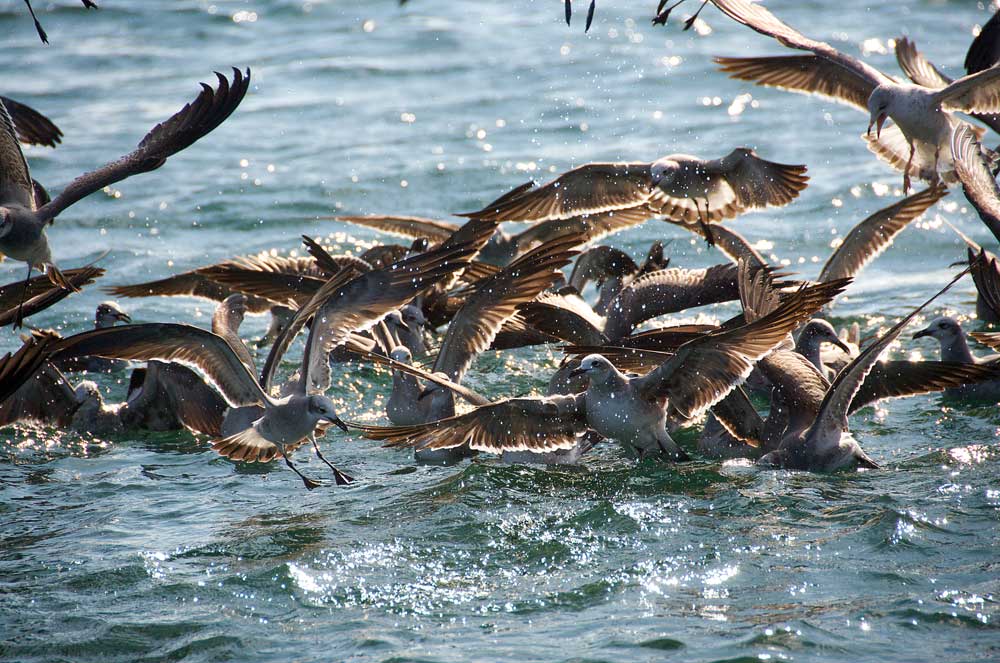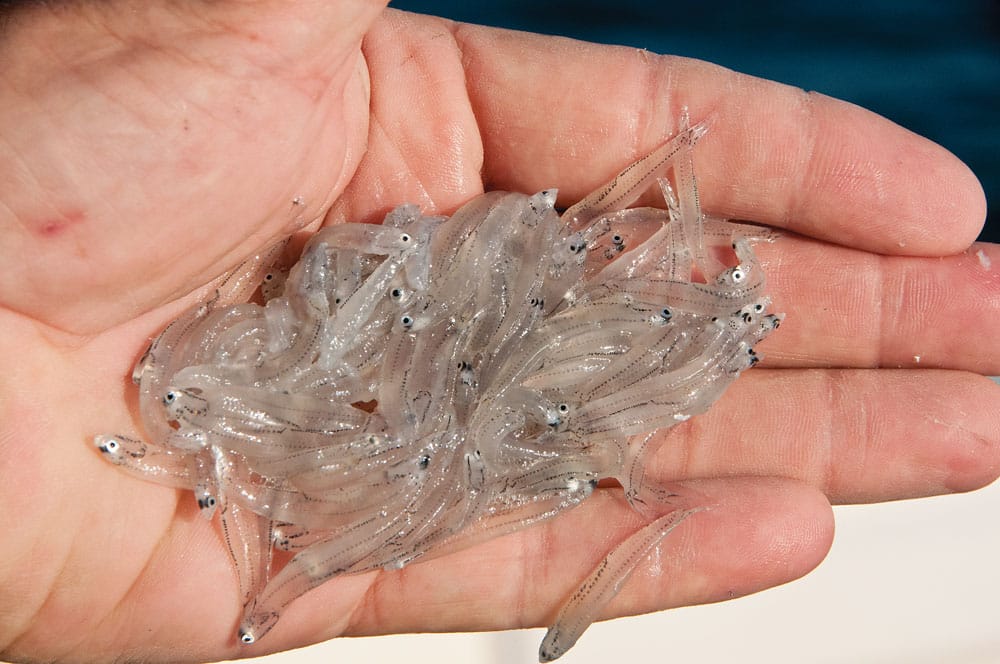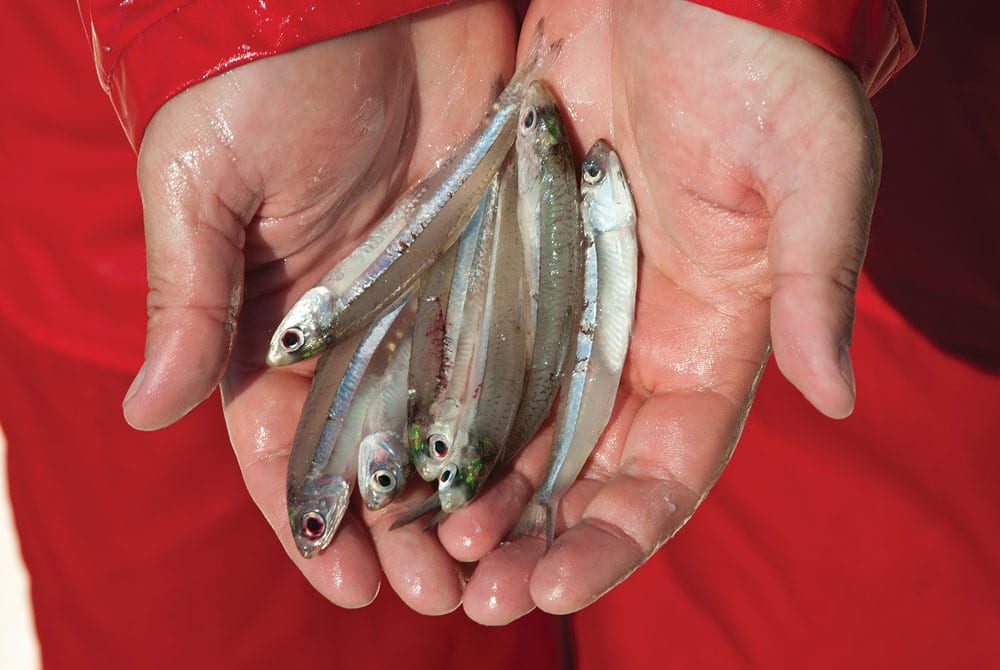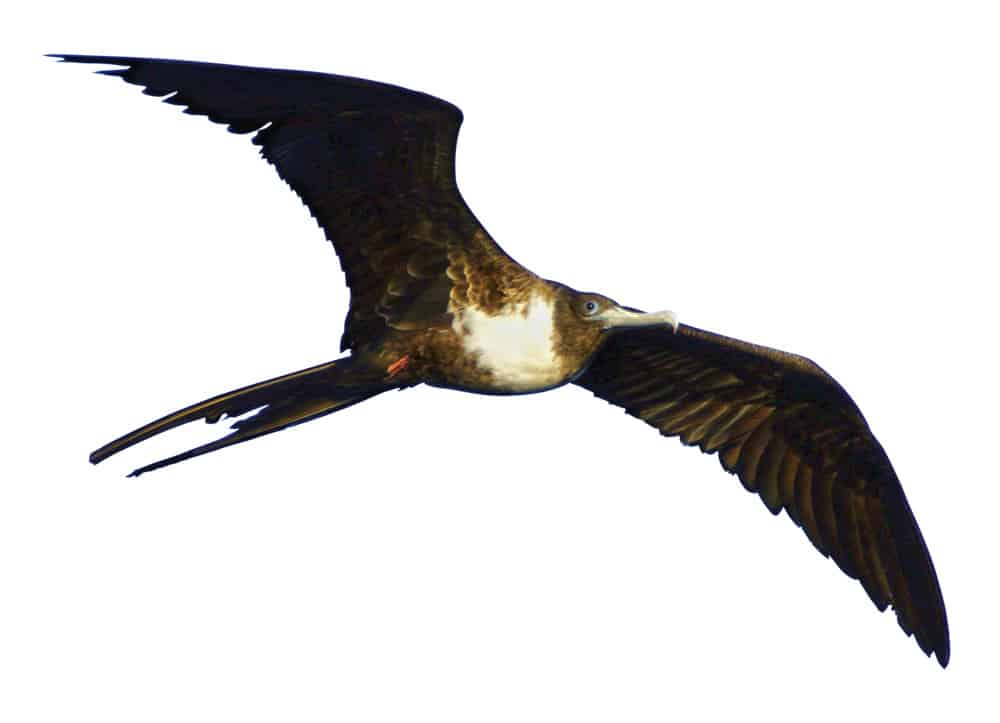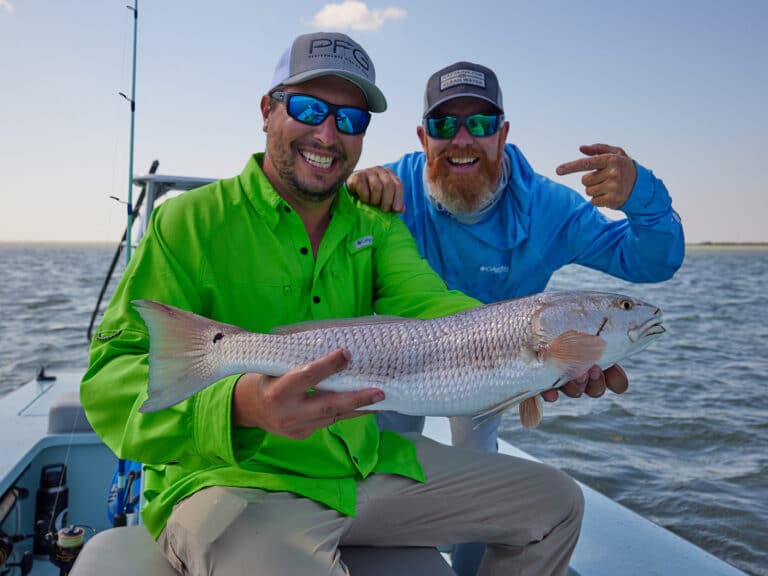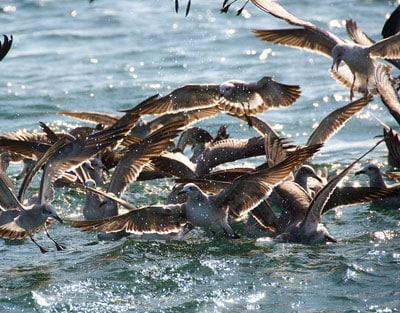
Bird main
Becoming a better fly-angler means learning not only how to cast, tie flies and fight fish but also how to interpret conditions and signs Mother Nature provides us.
Most anglers know that birds are good indicators of the presence of fish. When they dip, dive and hover over the water, it can mean that fish are on top. Birds can also tell us which direction bait and predatory fish are moving. But — they can tell us even more. Birds act differently when they are around different types of baitfish, and being able to distinguish these signs and react to them make you a more successful angler.
Along the mid-Atlantic during the fall, we can find baitballs and birds most days. There are at least four kinds of baits that birds like to key in on.
The first bait that starts its migration is what locals call “snot bait.” They are tiny, clear, slender minnows with black eyes. Many times you see false albacore and/or Spanish mackerel rolling through schools of snot bait with only a few birds or sometimes none at all. The birds you see on this baitfish are mainly gulls that tend to sit on the water and wait. Because these baitfish are so small, birds have a hard time catching them in their beaks. When fish are feeding on snot bait, anglers can find it difficult to catch fish too.
One- to three-inch anchovies attract clouds of gulls, terns and even pelicans. Anchovies this size make up the classic baitball. The tighter the baitball, the tighter the flock of birds. These can be small flocks of birds on smaller baitballs or great flocks working big shoals of anchovies. Albies pick at the edges, making the ball of bait and birds tighter. After slashing the outside of the ball, they will eventually blast through the ball itself. When Spanish mackerel and/or bluefish show up, they tend to crash through the ball and spread the bait over a larger area. The birds will be manic and spread out as well.
Big anchovies four to six inches long will draw attention from everyone. As a rule, there are only two or three days during the season that are calm enough for these big baits to come to the top. The dead giveaway is a round flock of pelicans sitting wing to wing on the water with gulls flying overhead. You might even have an immature gannet or two diving into the knot of pelicans. Watch the pelicans and at times you will see some rise up as if something is hitting their feet. Something is hitting their feet: big albies blasting through the baitball. You can slowly move up to the pelicans and flush them; as soon as they lift off, get ready for the blitz to appear.
The last bait to appear in the season is spearing or Atlantic silverside. These baitfish have the good sense not to ball up but rather to spread out. For the most part, spearing stay closer to the beach, and when they are being pushed to the top, there will be small groups of birds trying to grab them right out of the air. When albies chase spearing, they tend to be in small groups. Watch the birds as they fly around — they can tip you off where the albies will appear next.
Elevation makes all the difference. Birds hover over schools of albies and simply wait for the next explosion, which is their opportunity for a quick snack.
Another late arrival during the season is northern gannets. Big groups of gannets will rain out of the sky and swim down into schools of bunker. At times schools of redfish can be found hanging around these pods of bunker and flocks of gannets, so they are always worth exploring.
Back in the days of the northern Outer Banks’ legendary winter striper fishery, experienced fly-anglers would often run right by huge flocks of dive-bombing gannets. The gannets were diving on bait, mostly menhaden but often croakers or weakfish. Gannets are strong feeders and do not rely on predator fish to push their food to the top. Gannets will often swim down as far as 60 feet to capture baitfish. Really, this is a bit too deep for fly-fishing, but a flock of gannets mixed with gulls and pelicans usually means the bait is near the top or some type of predatory fish is driving the baitfish up to the surface.
